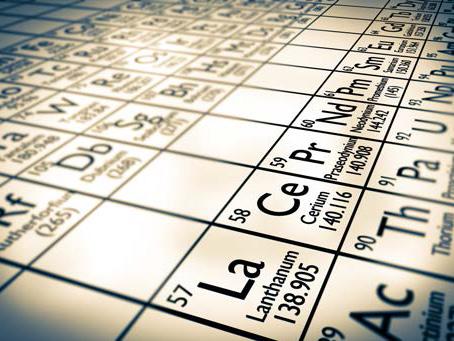Research in critical minerals
The University of Adelaide has the expertise to cover end to end critical minerals research and education, and stands ready to work with industry to discover and develop Australia’s critical mineral resources.
Critical (or strategic) minerals are vital to the next generation of global technologies. Most are subject to regional and geopolitical supply concerns. Australia recognises their importance and, like other jurisdictions (e.g. UK, USA, EU, Japan), is seeking to identify our potential for future supply.
Finding and sustainably extracting critical minerals brings a new set of challenges that very few are equipped to meet. Many critical mineral resources do not form high grade ore deposits as such but rather occur in trace amounts in other ores, whereas many metals, such as the rare earth elements (REE), very rarely reach economic concentrations of their own. Deep knowledge of such deposits – including the understanding of how to process
them to saleable products – exists in only a few pockets globally.
Australia is well endowed with many critical minerals including REE, and has vast potential for discovery of further resources in the future, particularly in underexplored areas of central
Australia.
The University of Adelaide is establishing a new Critical Minerals Research Centre, within its Institute for Mineral and Energy Resources. The Centre will combine world-class expertise across Geoscience and Engineering (see descriptions below). The University has made a strategic new appointment in Associate Professor Carl Spandler, an expert in critical minerals geoscience, who will lead the new centre.
The university has the talent and ambition to cover end to end critical minerals research and education, and is equipped to work with industry and government in discovering and developing Australia’s critical mineral resources.
Capabilities and track record
- Complex mineralogy and deposit formation in ores, concentrates and tailings across the critical mineral spectrum. Extensive experience in the geology, mineralogy, geochemistry and processing of critical minerals.
- Deep understanding of critical mineral deposits in Australia, as well as copper, gold and uranium deposits that contain critical minerals as potential byproducts.
- State-of-the-art analytical infrastructure, expertise and technique know-how to support the above-mentioned expertise. National/international research networks with key groups globally.
- Globally recognised capabilities for detection and management of radioactivity in all types of materials (the Centre for Radiation Research, Education and Innovation (CRREI) and the Institute for Photonics and Advanced Sensing (IPAS).
- Long standing existing partnerships with other Australian universites (e.g., the University of South Australia, ANU, Curtin University, James Cook University) providing complementary expertise in geology, mineral chemistry and minerals processing. Ongoing research partnerships with Geoscience Australia and most state and territory geological surveys.
- Track record of collaboration with the Australian minerals industry, including BHP, Glencore and OZ Minerals, as well as more than two dozen METS companies, within the framework of current projects targeting the entire minerals value chain from greenfields exploration to end-products. These include, but are not limited to:
- The ARC Research Hub for Australian Copper-Uranium (2015-2020);
- ARC linkage project “Realising Australia’s rare earth resource potential” (2020-2023);
- QLD government New Economy Minerals Initiative Research Project: Rare earth element ore potential of central and north QLD (2020-2023);
- The industry project “Trace elements in iron oxides: deportment, distribution and application in ore genesis, geochronology, exploration and mineral processing”;
- The Consortium “Unlocking complex resources through lean processing” (2018-2022);
- The ARC Training Centre for Integrated Operations for Complex Resources (2020-2025); and
- ARC linkage proposal “Critical metals from complex copper ores: sustainable mining to meet the demand of green technologies” (University of Adelaide – BHP Olympic Dam). Total budget $1.25 million, submitted April 2020.

Future opportunities in discussion include:
- Ongoing engagement with a range of Australian rare earth element companies.
- Proposals to investigate the mineral exploration potential of the Curnamona Province, eastern South Australia
- Roadmap for recovery of by-product cobalt and rare earths from Cu-Au ores. Ongoing engagement.
- Partnership with METS Company to develop new tools for critical mineral exploration based on drilling technologies and machine learning capabilities developed previously. Ongoing engagement.
- Identifying alternative, low-carbon metallurgical methods for critical mineral recovery (as a potential component project within the HILT CRC).
- Proposals and discussions around the recovery of critical minerals from mineral sands deposits within various locations in Australia.
- Proposals to extract critical minerals from mineral processing streams within existing facilities in South Australia.
For Further Enquiries:
Interim Director, Institute for Mineral and Energy Resources (IMER) - Modern Energy Systems
